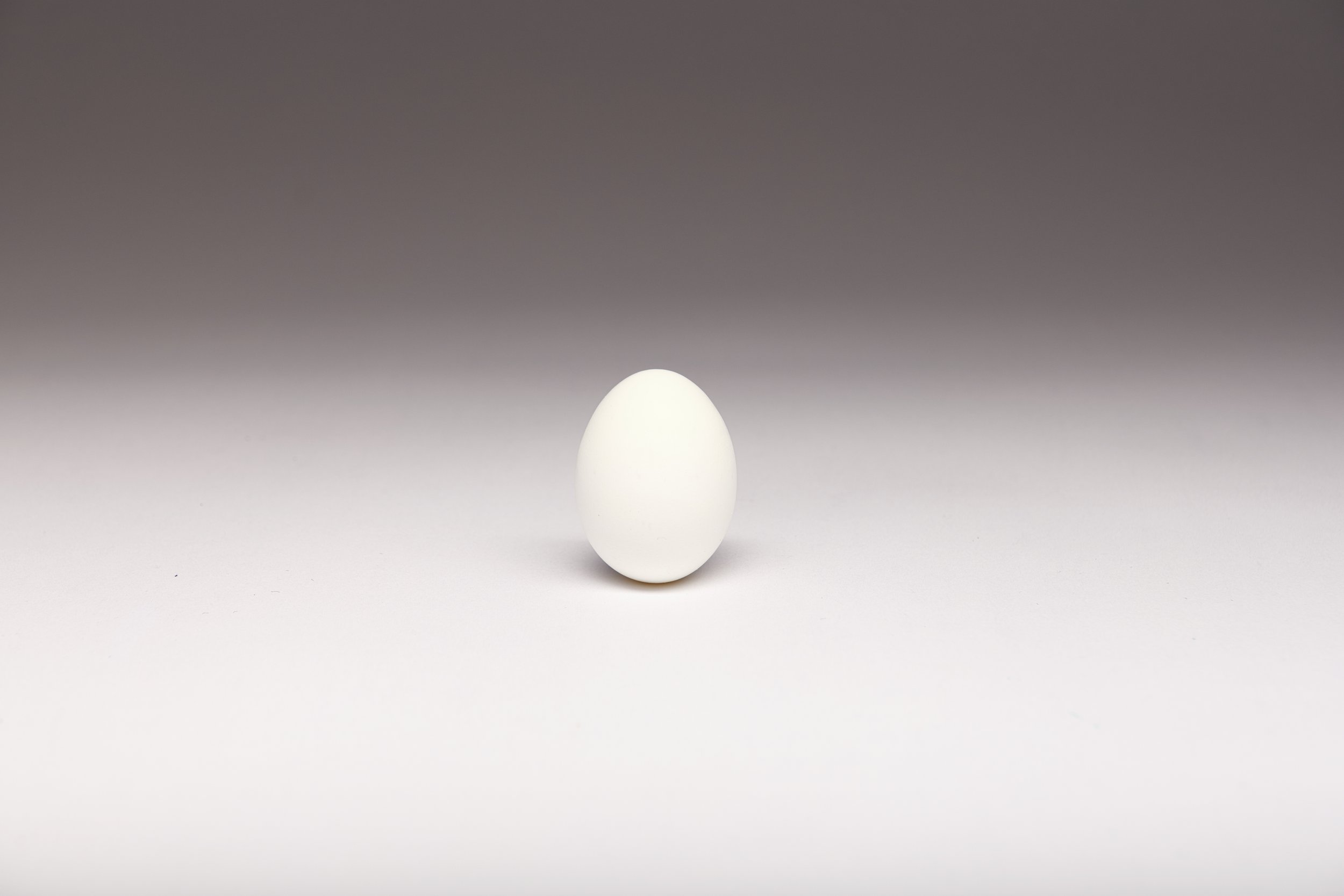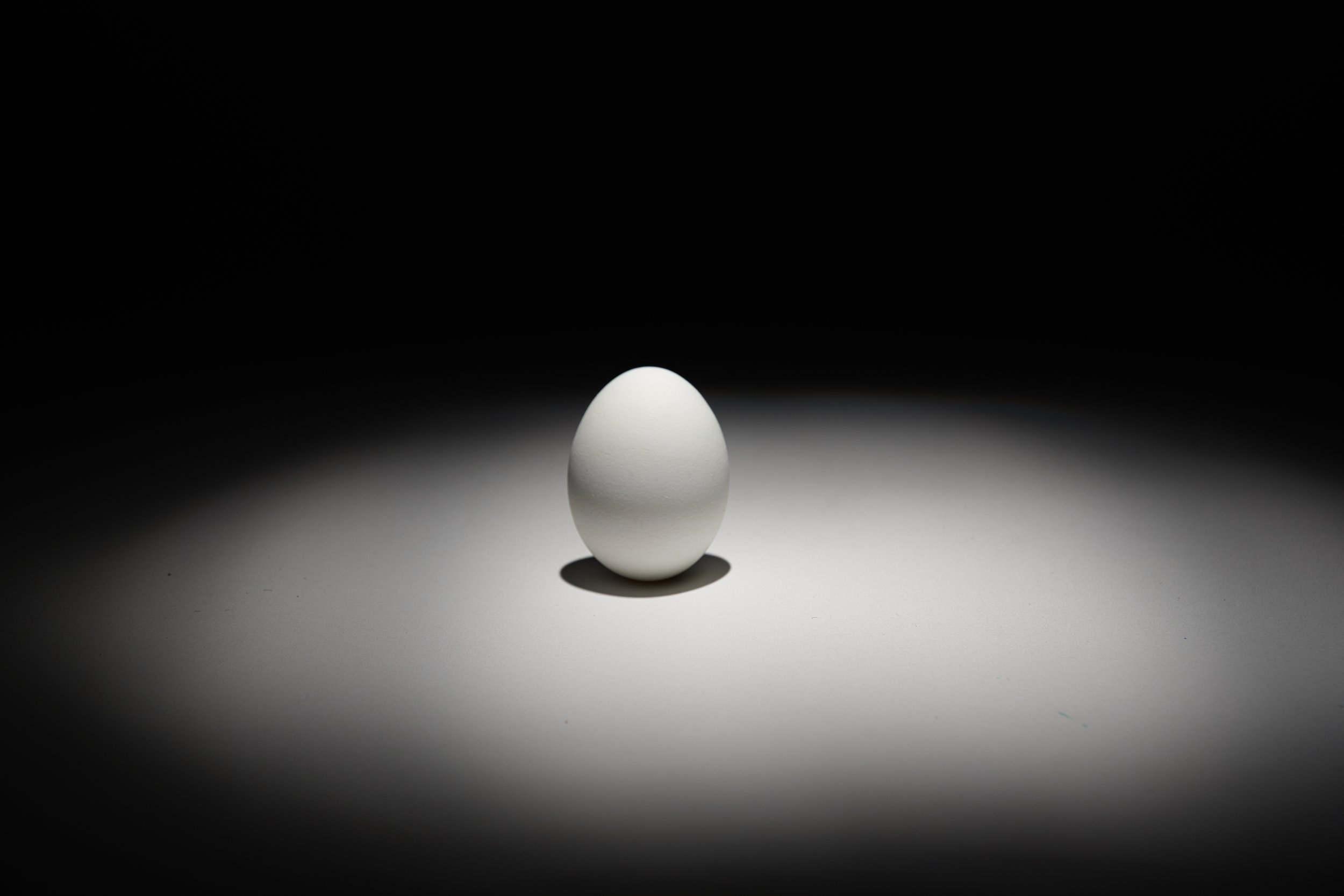One Light and the Egg
There are no real tricks to learning photography. Instagram, TikTok, and YouTube have thousands of people who will tell you different. Do this trick and you are now a pro. They are wrong. Quality photography is a path based on continuous learning. It is a journey into the challenge of the craft. It is an art based in light.
Learning Light
The camera itself is just a box which at it’s root captures and records light with three options:
Aperture - The amount of opening the lens has to allow light to enter the box.
Shutter - The amount of time allowed for that light entering the box.
ISO - How sensitive the box is to record that light.
Studio Lighting
Studio lighting with strobes, speedlites, and monolights are based on controlling what light ends up in that camera box. In general the camera shutter speed is setup so without these light sources the image is blank (black). That means that this photo is the perfect starting point for studio photography:
By setting the camera to the maximum flash sync, a lower ISO like 100, and an appropriate aperture, you now know you control any form of light put into the studio space. In other words you are the master of whatever light a shadow introduce into the frame. You are now in full control of the image.
So, How Do You Learn Control?
Okay, so now you, the photographer, is in control. But how do you learn the how, what, where, and modification of light? How are you going to move from a black box to being in full control of the light on your subject? Well, you need to learn. You have to learn by doing. You have to test and understand what the equipment you spent hard earned money on does. This is where the “Egg Exercise” comes in.
What is the Egg Exercise?
Various versions of this exercise exists in books on lighting. The exercise needs a plain background and a simple object that can create shadows. The backdrop for this example is just white photography paper available from Savage Paper. The object is just a hard boiled egg. Although other subjects could be used, an egg is an interesting and challenging choice. The egg being oval and close to the color of the white paper, the real separation of the subject comes from how you use the light. In the first example photo in this blog the egg is lightly visible with just a very small shadow. In the next photo we start to see more separation and use of shadow. Then we can move to something like this next photo where a lot of the background disappears and the egg takes center stage.
Light Controls Feeling
What are the differences between these images? They all use one light, a modifier, and placement to achieve their affect. As a studio photographer you have control of feeling by controlling the light on the subject. You can even create the feeling of direction. Look at the photo below. Doesn’t it create a different feeling than the images before it?
Take Your Own Journey Into Light
Notice there is no wrong answer in this exercise. There is only the expedition into the discovery of what light can do. Learn by picking up a camera, using a single light, and studying light intensionally. Experiment to discover if what you assume will occur is what the reality of your lighting will produce. This exercise helps you understand light in a way that nothing on Instagram, TikTok, or YouTube ever will. Welcome to the learning journey.




